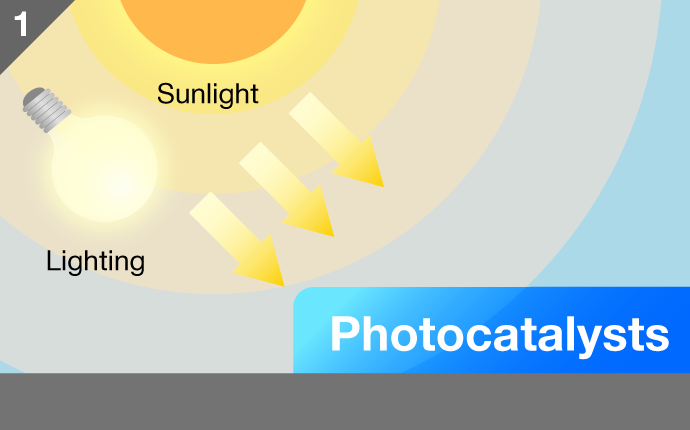How does a photocatalyst work?
It helps “produce” the “substances that decompose sources of odor.”
What are “photocatalysts,” which are becoming more common recently?
In the presence of light, they help in forming the substances that decompose sources of bacteria, viruses, and unpleasant odor. Photocatalysts are activated when exposed to light, and they support the chemical reaction for producing active substances from the moisture in the air.
Mechanism of decomposing the source of odor




Decomposes the source of odor!
Hydroxyl radical produced by photocatalyst decomposes various sources of odor through its own aggressive behavior. For example...
- Acetaldehyde: Malodorous substance contained in tobacco.
- Methyl mercaptan: Malodorous substance contained in garbage.
- Formaldehyde: One of the substances causing sick house syndrome contained in paint, etc.
- Ammonia: Malodorous substance contained in urine odor.
- Toluene: Malodorous substance that may be contained in paint.


What kind of “light” activates photocatalysts?
"UV light is common. In recent years, however, UV cut glass to protect from sunburn is used in various places including vehicles and trains, making it difficult for sunlight containing UV light to reach. In order to solve this problem, ThreeBond is developing photocatalyst spray that exerts its effects under “visible light.” Photocatalysts will work actively in vehicles, offices, and living rooms!"
It is not a self-contained process
"Moisture in the air alone cannot decompose the source substances of unpleasant odors. However, with the aid of photocatalysts, a chemical reaction that will not happen by itself proceeds, causing pleasing effects for us such as deodorizing or antibacterial effects."
